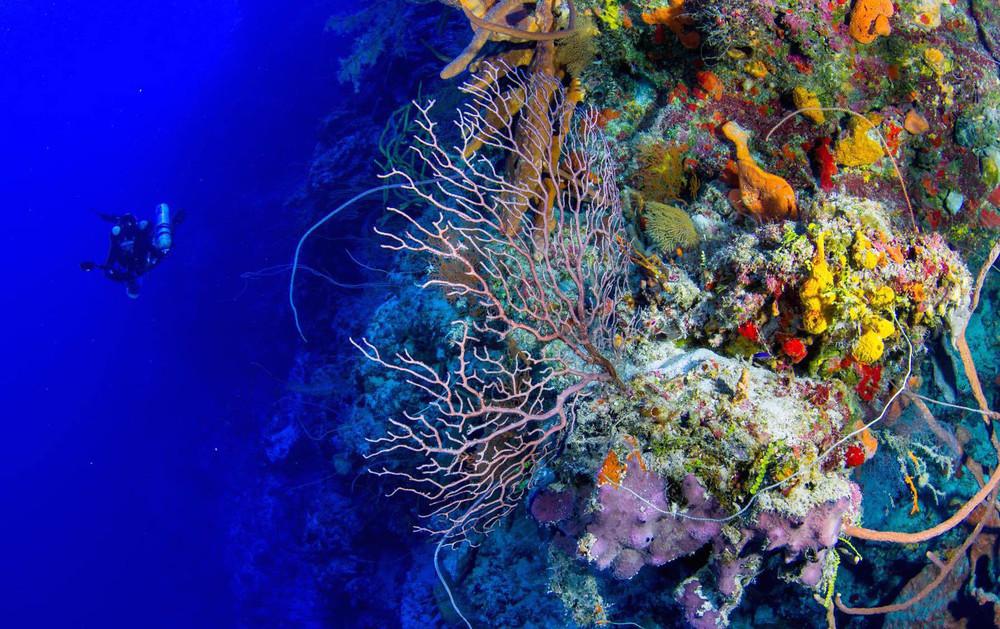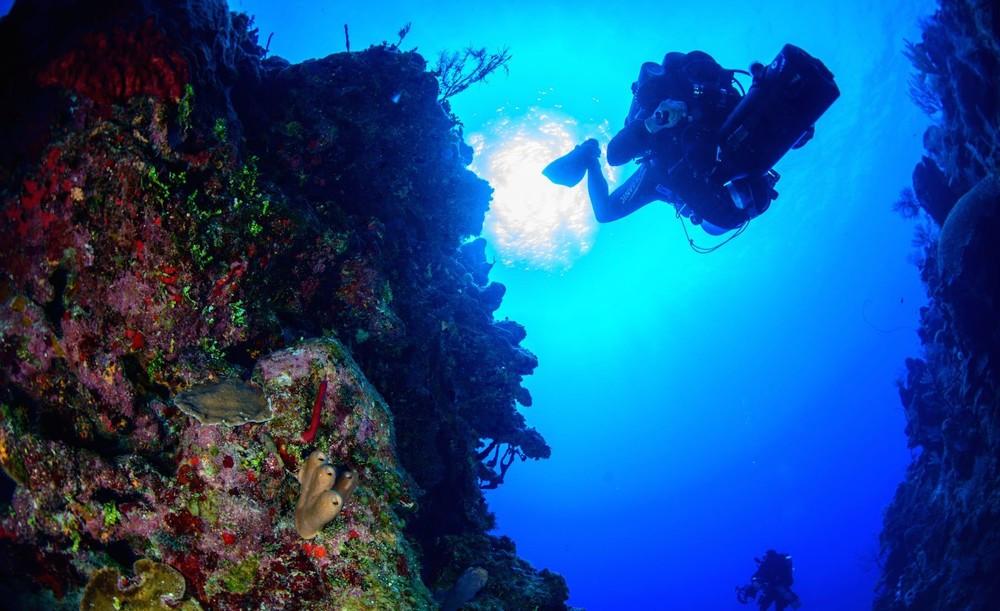
credit: Luiz Rocha
Dr. Luiz Rocha is the curator and Follett chair of Ichthyology at the California Academy of Sciences, and he is one of the scientists responsible for bringing us its latest exhibit, Twilight Zone: Deep Reefs Revealed. The exhibit showcases animal and plant life that lives between 200 and 500 feet below the ocean’s surface – an area that is too deep for normal divers to reach; only 20 to 30 scientists worldwide are able to dive to such an extreme depth.
Dr. Rocha (with the help of Rick Paulas), recently published an article on vice.com, where he talked about the incredible amount of care that he must take when making these dives:
“When you’re down there, in the Twilight Zone, everything you see is a novelty. It’s incredible and always exciting. Your adrenaline just goes through the roof. But you have to keep an eye on your oxygen and what’s going on with your rebreather, because there’s no margin for error down there. The dangerousness of it all would probably be stifling for some, but the excitement for scientific discovery is what keeps me going.
The training is specific for the rebreather unit. At 400 feet, if you breath too much oxygen or too little, you’re dead, and we didn’t have reliable sensors until 20 years ago.

credit: Luiz Rocha
When we get to our dive site, we spend about an hour setting up the rebreather, testing, and everything else. We go through a very long checklist. Usually, the team is three or four total divers. We plan how deep we’re going, how long, but always have a contingency if we find something deeper or shallower and have to change on the fly. Five-hundred feet is our maximum depth.
On the way up, we stop every 10 feet, with each stop lasting longer. The first would be one or two minutes, the last at ten feet below the surface is like two-and-a-half hours. When we get to 100 feet, support divers usually bring cameras and gear we can use to research those depths. We take pictures, survey bleached corral, conduct fish surveys where we just count the fish—anything to keep us occupied. For 95 to 98 percent of our dives, we swim down along the wall of a reef until we reach the depth we want, so there are things to explore going back up.
When you’re diving at that depth, you have to keep track of a lot of different things. People compare using the rebreather to flying an airplane. Some say you don’t dive a rebreather, you fly it. It’s not as complicated as an airplane, but it is just as dangerous. If you do one or two things wrong, you’re done.”
You can read the full article here. Thank you for all your hard work and dedication, Dr. Rocha!










0 Comments